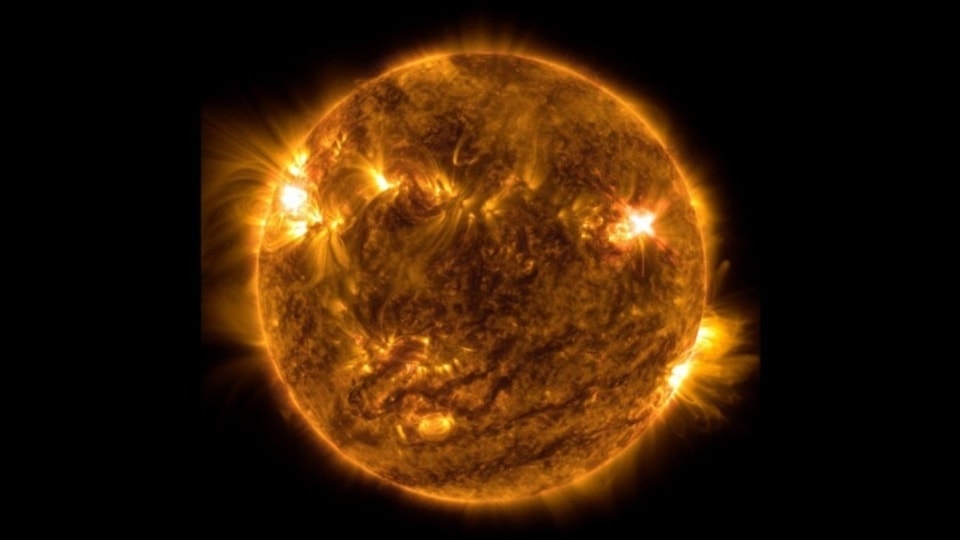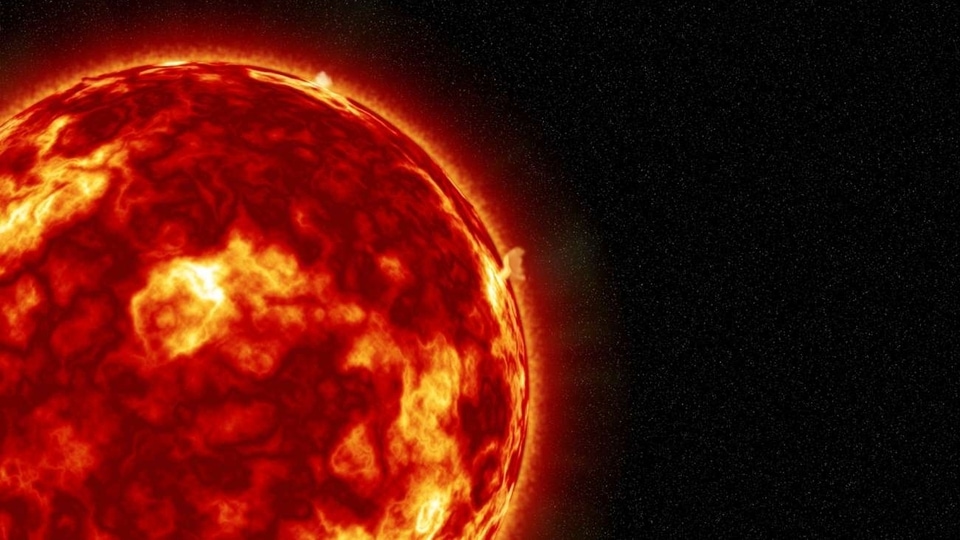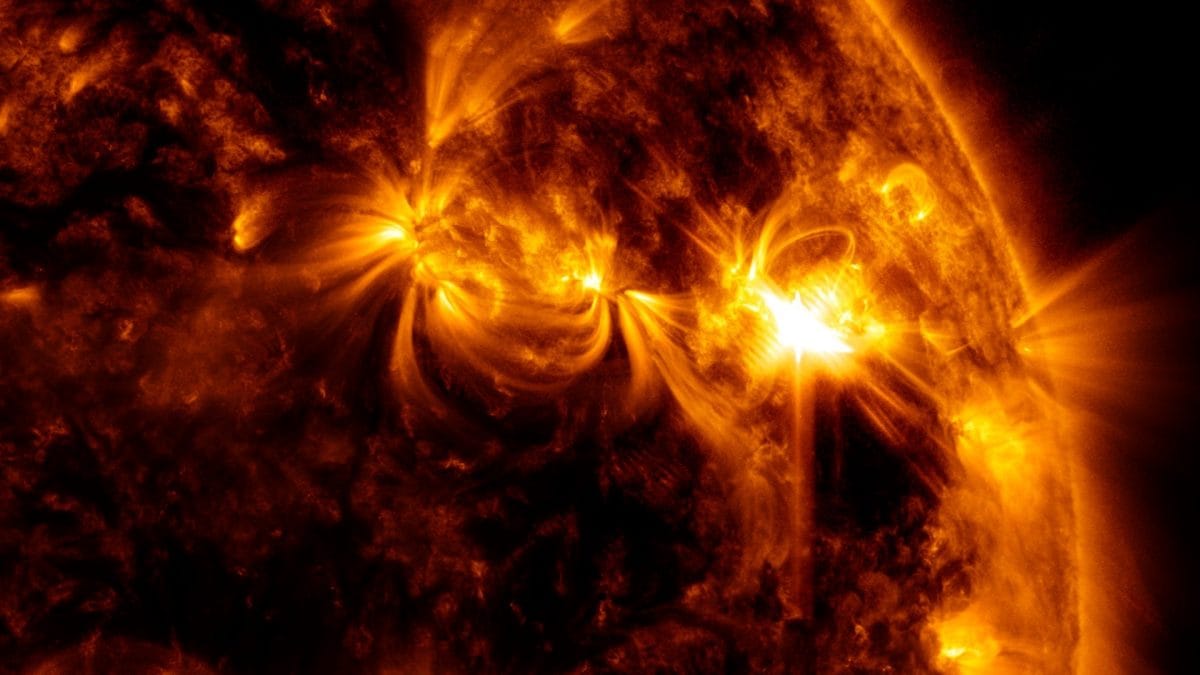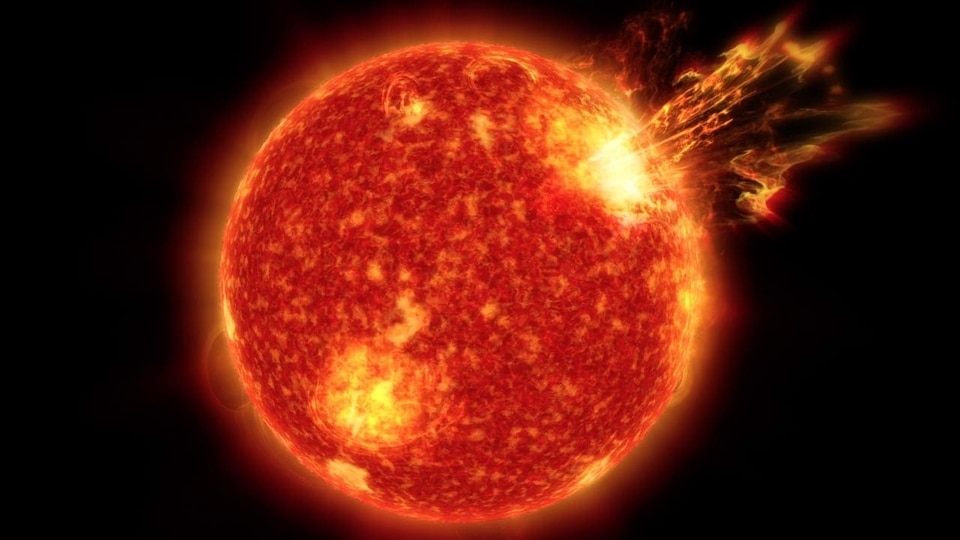MASSIVE solar flare blasts out high-speed CME, NASA satellite shows; Solar storm set to strike soon
It has finally happened. The notorious sunspot AR3363 has exploded producing a massive solar flare. It has released a large CME component that is moving at a high speed. There is a possibility of an Earth-bound solar storm too.






 View all Images
View all ImagesThe Earth just experienced a minor solar storm yesterday, July 17, that sparked aurora displays at some locations in high-latitude areas. But just as soon as this solar activity subsided, another, bigger problem arrived. In the early hours today, July 18, a big M6-class solar flare erupted on the unstable region of AR3363 on the Sun, as detected by the NASA Solar Dynamics Observatory. Researchers believe this solar flare is more dangerous than X-class flares due to the long duration of the event. It has also released a large coronal mass ejection (CME) cloud, that is moving at a high speed. There is a possibility that it can hit the Earth and spark a major solar storm activity.
According to a report by SpaceWeather.com, “Big sunspot AR3363 just produced a major M6-class explosion (0006 UT on July 18th). NASA's Solar Dynamics Observatory recorded the long-duration event. SOHO coronagraphs have detected a bright CME emerging at high speed from the blast site. There are not yet enough data to determine if it has an Earth-directed component”.
Earth awaits a powerful solar storm
To help you understand just how dangerous this solar flare eruption was, you should know that the output of the flare was noted to be at the M5 level for over an hour. The overall energy released was more than many X-class solar flares could possibly have. The longer duration also ensures that the CME cloud would be highly potent and capable of causing massive destruction.
Last month, we saw a similar high-speed CME making its way to Venus, where it eroded a part of its atmosphere due to its impact. A similar event on Earth can be deeply concerning. Such solar storms can damage small satellites, impact mobile networks, and GPS, and even pose a threat to ground-based electronics and power grids.
The role of the NASA Solar Dynamics Observatory
The NASA Solar Dynamics Observatory (SDO) carries a full suite of instruments to observe the Sun and has been doing so since 2010. It uses three very crucial instruments to collect data from various solar activities. They include Helioseismic and Magnetic Imager (HMI) which takes high-resolution measurements of the longitudinal and vector magnetic field over the entire visible solar disk, Extreme Ultraviolet Variability Experiment (EVE) which measures the Sun's extreme ultraviolet irradiance and Atmospheric Imaging Assembly (AIA) which provides continuous full-disk observations of the solar chromosphere and corona in seven extreme ultraviolet (EUV) channels.
Catch all the Latest Tech News, Mobile News, Laptop News, Gaming news, Wearables News , How To News, also keep up with us on Whatsapp channel,Twitter, Facebook, Google News, and Instagram. For our latest videos, subscribe to our YouTube channel.































